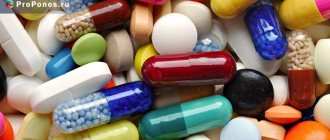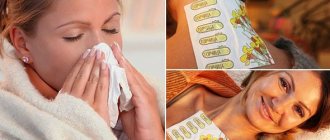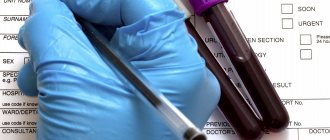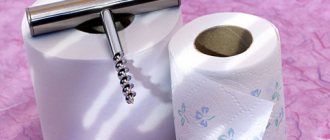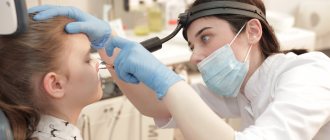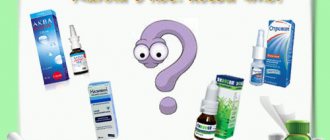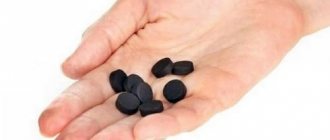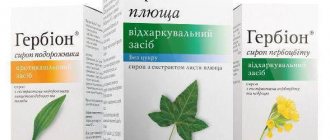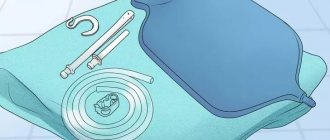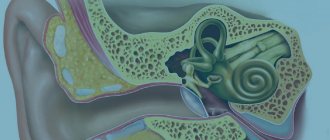Nasal rinsing or lavage is one of the methods of treating a cold that makes it easier. It allows you to get rid of mucus, relieve swelling, wash away pathogens and reduce inflammation. Some experts recommend carrying out the procedure as a prevention of ARVI in the autumn and winter, others even advise including it in the list of daily hygiene measures.
Types of lavage
The modern nasal rinsing procedure has quite a few options, united under this general name. These in ENT practice include:
- Nasal irrigation . This type of lavage is considered one of the softest. A balloon is brought to the nostril, from which the active substance is evenly sprayed (usually sodium chloride, that is, ordinary salt). Nasal irrigation is carried out using special pharmaceutical preparations (Dolphin, Rhinolife). A nebulizer operates in a similar way. There is known data on the penetration of drops of the drug into the maxillary sinuses. This method is recommended for patients with damaged and sensitive nasal mucosa.
- Rinsing with a pear or mug . This method is the most common. It is suitable for use at home. When washing, it is important to follow safety precautions. Otherwise, the infection may spread from the nasal cavity and sinuses to the middle ear.
- Nasal shower. The procedure is performed in a hospital or clinic setting. For this purpose, special equipment is used, consisting of a needle or olive, which is attached to the vestibule of the nose, a hose and a container with saline solution (0.9% saline solution). Note. Some doctors also classify the previous method as a nasal douche.
- Water jet washing. Used for young children who are not yet able to follow the recommendations of a doctor or other adult. The treatment solution is fixed in a container on a tripod and gradually flows into the child’s nasal cavity. It is also removed from the adjacent nostril without pressure. A pediatrician or parent can rinse the nose in this way after receiving appropriate recommendations.
“Cuckoo” or Proetz washing method.
Such lavage is also carried out by a specialist doctor. The patient should be in a supine position. The device is a container with an olive, through which liquid is supplied. An antiseptic solution is pumped into one nostril and removed from the other using suction. The patient is advised to say “ku-ku” to increase pressure on the fluid, hence the name of the method.- Nasopharyngeal baths . The method consists of pouring 50 ml of liquid with a medicinal substance into the nasal passage of the patient, bending over a sink. After it fills the cavity, he is recommended to pronounce “ke-ke” or “ku-ku”. As a result, the soft palate reflexively rises, which creates a sealed space in the nasopharynx. The liquid should remain there for up to 30 seconds, after which it flows freely from the adjacent nostril.
- Aspiration. The method is used for infants who do not know how to blow their nose. A medicinal drug is poured into the child’s nose using a spray or syringe, and the mucus is sucked out with a bulb or a special aspirator.
How to prevent complications?
Nasal drainage is not a completely safe procedure. If the procedure is carried out incorrectly, sinusitis, eustachitis, and otitis may occur.
To avoid complications, be sure to follow the rules when washing:
- if your nose is stuffy, use vasoconstrictors before the procedure and blow your nose thoroughly;
- When finished, remove any remaining fluid from the nose;
- do not drain before going to bed or going outside - the liquid may leak out for some time;
- inject liquid into the nostril under low pressure to avoid entering the middle ear;
- the temperature of the washing solution is 35-36 degrees.
When irrigating with a syringe (without a needle), act carefully so that the hard nose does not leave scratches on the mucous membrane.
If you use precautions, rinsing your nose will not cause any inconvenience and will not cause complications.
Congestion in the ears: causes and treatment with folk remedies.
Read this article on how to treat stye on the eye.
To avoid getting sick, boost your immunity! How!? Read in this article.
Goals of the procedure
During nasal rinsing, the following therapeutic and hygienic effects are achieved:
- Softening dried mucus crusts and removing them.
- Liquefaction of liquid secretion and its evacuation. This is especially important if you have a runny nose that causes nasal congestion.
- For allergies, rinsing ensures the removal of antigens (substances that cause rhinitis in this case) from the surface of the nasal cavity.
- Preparation of the mucous membrane for the absorption of drugs. This increases the effect of medications taken through the nose.
- Removing pathogens (bacteria, viruses or fungal parasites) from the surface of the nasal cavity.
- Irritation of trigeminal nerve receptors. It is responsible for the size of the lumen of the vessels that supply the nasal cavity. The solution, getting on the mucous membrane, mechanically affects the nerve. As a result, the lumen of the blood vessels decreases, swelling subsides and the secretion of liquid secretion decreases (a runny nose goes away).
- With a nasal douche, mucus is removed not only from the nose, but also from the sinuses, which is especially useful when they are inflamed.
- Antiseptic effect. Washing preparations often include components that inhibit the growth and reproduction of pathogenic microflora. Even saline solution has these properties.
- Anti-inflammatory effect. It is provided by a number of drugs intended for lavage.
How to use seawater sprays correctly?
It would seem that what is unclear here is that seawater sprays need to be sprayed into the nose, just like all other nasal sprays. In reality, everything is not so simple. After all, the main goal of such treatment is to irrigate the nasal cavity as completely as possible, without missing a single section of the mucous membrane. Moreover, when using sprays to treat small children, one should take into account the structural features of the nasopharynx, and most importantly, the possibility of the drug getting into the child’s throat. Sudden penetration of the drug, and even under pressure, can provoke bronchospasm.
But let's not exaggerate. Nasal sprays with sea water are very safe, and when used in pediatric practice, in order to avoid complications, you just need to carefully follow the rules of use. Let us remember them so that we never forget them again.
Nasal irrigation for children under two years of age
Place the child on his back and turn his head to the side, and then irrigate the nasal passage, which is located on top, as thoroughly as possible. After this, the child needs to be seated and asked to blow his nose well. Then the same actions are repeated with the second nasal passage.
Irrigation in children over two years of age and in adults
The procedure can be performed both standing and sitting.
For the most effective spraying, you need to turn your head to the side, press the sprayer, rinse your nasal cavity, and then try to blow your nose well. Let us add that the effectiveness of irrigation is maximum when the nose breathes freely. Otherwise, it is very important to drip vasoconstrictor drops into the nose a few minutes before the procedure and reduce swelling of the mucous membrane.
And in conclusion of the article, I would like to return to where we began our story - to the validity of the use of fairly expensive drugs with sea water. Of course, theoretically, you can replace these products with ordinary saline solution, extracted from an ampoule or even made “by hand” and poured into a syringe or neti pot. However, you will not be able to replicate the unique composition of microelements that is characteristic only of sea water, no matter how much effort you put into it. Add to your spray kit the ability to quickly and purposefully deliver medicine to the desired point with a force that is only available to factory-made aerosols. And the answer to the question whether it’s worth paying for water in a bottle will be quite obvious, as proven by the consistently high demand for sea water sprays and, of course, grateful customer reviews.
Previous Vasoconstrictor nasal drops - treating the symptoms of sinusitis
Next Adenoids - treat, can't you wait? Details about the treatment of adenoids
Indications for nasal rinsing
If we exclude the hygienic purposes that this procedure serves, it is recommended to carry out it in the following cases:
- Rhinitis. Another name for this phenomenon is a runny nose, and its causes can be very diverse. Most often it is the result of an infection or allergy. Less commonly, rhinitis can occur as a reaction to constant irritation from mucous dust, small dirt particles or chemical agents. Nasal rinsing can be done in all these cases. In case of allergies, it is necessary to more carefully select preparations for making the solution so as not to aggravate its course.
Sinusitis. This is an inflammation of the sinuses; it is quite difficult to get the medicinal drug there, especially at home. The most common form of sinusitis is sinusitis, which a couple of decades ago was treated mainly with a puncture. Only the attending physician should determine the degree of development of the disease and the appropriateness of the procedure. Nasal rinsing for sinusitis is best done in a hospital setting.
- The period after nasal surgery. This is the time for the restoration of the mucous membrane, when it needs constant care. The type of lavage - nasal shower, irrigation - must be determined by the doctor. It may be more appropriate to simply use sprays to moisturize the mucous membrane.
How often should you rinse your nose?
A healthy person is recommended to rinse his nose daily; it is best to do this in the morning, before meals, as part of daily hygiene procedures.
If you develop rhinitis, then to stop the disease, you can rinse your nose 3-4 times a day, about an hour or two after eating.
Should I rinse my nose with salt water?
More details
Rules for nasal rinsing at home
Nasal shower
You can independently use the lavage method using a pear or a nasal mug. It consists of several stages:
A working solution is being prepared. It may contain pharmaceutical preparations or regular table salt and soda. If desired, you can use sea water. In the first case, you can add one teaspoon of salt and half a teaspoon of soda to half a liter of water.
- The patient leans approximately 45° forward and to the side.
- The nose cup (with a spout) is brought to the nostril. It can be replaced with a regular teapot or syringe.
- Slowly pour the solution into the top hole.
- If the nasal passages are normal, it should flow out on its own through the lower nostril.
- Part of the solution may get into the mouth - this is also not a deviation from the procedure.
- The procedure is repeated for the adjacent nostril.
Important! It is better to refrain from excessive blowing of the nose during the procedure, since the liquid along with the infectious agent can enter the middle ear and cause otitis media.
Rules for rinsing your nose at home:
- To carry out the procedure, it is necessary to prepare a fresh, warm solution.
- The ideal temperature of the liquid is 36-37°, as close as possible to the temperature of the human body.
- When sick, it is recommended to rinse up to 3 times a day, for hygienic purposes – daily.
- After the procedure, it is better not to go outside for 1-2 hours.
Washing is contraindicated when:
- Nose is stuffed;
- There are polyps or malignant neoplasms in the cavity;
- The nasal septum is curved (in this case, the doctor should decide whether rinsing would be useful);
- The cold is complicated by otitis media;
- The patient often experiences nosebleeds.
Contraindications for nasal rinsing
Comment. It is better if a specialist first shows you how to rinse your nose correctly. This will reduce the risk of undesirable consequences and will allow you to correct errors in the procedure if they occur.
Nasal irrigation
The procedure is carried out using publicly available drugs: Dolphin, Rhinolife . During irrigation, no back draft of the solution is created; it flows out solely under the influence of gravity. This measure is one of the most gentle. It is not suitable for persons with severe nasal congestion or profuse purulent discharge.
Irrigation is also used at home. Along with the powder for preparing the solution, the kit includes a nozzle and detailed instructions for performing the procedure. The patient should be in an inclined position during nasal irrigation; this may be uncomfortable for older people. The method has no other disadvantages; it is extremely simple to implement. The patient simply needs to press on the bottle presented to the nostril until the solution flows out of the other.
How to properly rinse your nose? Washing technique
There are several options for implementing this hygienic procedure at home, since for this purpose the following can be used:
- syringe;
- syringe;
- pear;
- an ordinary teapot;
- special medical devices.
Regardless of the choice of device, there are a number of rules that must be followed:
- The temperature of the finished product should be within 25–30 °C.
- An adult needs to use at least one glass of liquid to cleanse each half of the nasal cavity.
- If manipulations are performed with herbal decoctions or products prepared from pharmaceutical preparations, they should be prepared daily. It is not recommended to use yesterday’s ones, since microorganisms have managed to multiply in them within a day.
- It is best to practice irrigation therapy over a sink, wide basin or other container with a large diameter.
- Before the event, you need to blow your nose well, and suck out the snot for babies using special aspirators, a syringe or other device.
- After performing the manipulation, you need to stay at home and avoid drafts for an hour.
- If the sessions do not bring relief or even cause a worsening of the condition, you need to stop self-medication and consult a specialist.
The procedure itself can be carried out in different ways. The choice of technique is determined by the extent of the inflammatory process and the age of the patient.
1
In case of isolated damage to the nose, it is enough to treat only it. To do this, tilt the head to the side and inject the product into the upper nostril. The correctness of the procedure is indicated by the flow of fluid from the second nostril. Then the procedure is repeated, bending in the opposite direction.
2
If the inflammation has affected not only the nasal cavity and paranasal sinuses, but has also spread to the nasopharynx and pharynx, they should also be cleaned.
To do this, the head is slightly tilted forward, one nostril is pinched, and the liquid is drawn in with the opposite one. In this case, the rinsing solution from the nose will flow into the oral cavity through the nasopharynx, cleansing it, and pour out from the slightly open mouth.
You can, on the contrary, tilt your head back, open your mouth slightly, stick out your tongue and inject liquid into the nasal passages using some device, for example, a syringe or syringe. As soon as it gets into the mouth, it is immediately spat out. After completing the session, it is recommended to blow your nose to remove any remaining moisture and mucus.
3
For children under one year of age, rinsing is not done as such, due to the fact that they still have very wide ear canals that open into the nose. Therefore, when liquid is introduced under pressure, it can penetrate them, carrying pathogenic flora with it.
This can lead to the development of otitis media or other equally unpleasant diseases. Therefore, children can only instill isotonic solutions several times a day just to rinse the nose with water and thin out the viscous mucus.
On the subject: How to properly rinse a child’s nose: a complete guide
Syringe
The easiest to perform is irrigation with a syringe. For adults, products with a volume of 10 or 20 ml are suitable; when treating children, it is better to limit yourself to 5 and 10 ml syringes. The product is drawn into the instrument without putting on a needle. Its tip is inserted into the nostril and, gradually pressing on the piston, liquid is injected.
Syringe (bulb)
To do flushing with a pear, special skill is also not required. The solution is drawn into it by squeezing the body of the device and immersing it in a container with liquid. Then the tip of the syringe is inserted into the nostril and, gradually pressing on it, the medicinal solution is injected. It is important to avoid sharp and strong pressure.
It is advisable to choose a device with a soft tip to avoid damaging the tissue. The volume of the bulb used can be any, but it is better to give preference to 200 ml devices, since this is the amount of liquid that is recommended to be used to cleanse one half of the nose.
Worth noting
The bulb for irrigation therapy cannot be used for enemas, vaginal douching or any other purposes!
[ads-pc-1][ads-mob-1]
Teapot or special teapot
There are special kettles on sale called “neti pots”. They are more often found in stores selling oriental goods, since such devices have been used by Buddhist monks for centuries specifically for daily cleansing of the nasal cavity.
But in the absence of one, an ordinary teapot will do, as long as it has a narrow spout. If the house only has a teapot with a wide spout, you can put a nipple on it with a cut off end.
The vessel is filled with the prepared solution, tilted to one side and the tip of its spout is inserted literally a couple of millimeters into the nostril. Raising the device, pour in the liquid, first opening your mouth slightly.
Precautionary measures
In general, irrigation therapy is quite safe, but certain precautions should still be taken when implementing it:
- When administering liquid by any method, you should hold your breath so that it does not penetrate the respiratory tract and ear canals.
- It is harmful to carry out manipulation until breathing has been restored, since this increases the risk of fluid and bacteria entering the ears.
- If you feel that water has gotten into your ear, you need to try to get it out immediately, for example, by tilting your head in the appropriate direction, twitching sideways, up and down, so that the liquid flows out faster. Otherwise, the ear may become sore, which can lead to the development of otitis media.
Nasal rinsing in pediatric practice
Irrigation procedures performed on young children have recently been highly valued by ENT specialists. Aspiration as a type of nasal lavage can be performed from birth. In a child under one year old, the nasal canal is narrow and short, so when there is a cold or allergy, it easily becomes clogged . Breastfed children eat poorly and sleep with nasal congestion, as a result their health worsens and their body weight decreases.
At home, aspiration is most often used . Modern experts recommend using the Otrivin nasal aspirator to remove mucus instead of a pear. In the article by E.P. Karpova and E.E. Vagina, published in the Independent Journal for Medical Practitioners, states: “Uncontrolled intensity of [bulb] aspiration can lead to negative consequences. Blowing air into the baby’s nose entails pushing the secretions deeper.”
Many mothers of infants note that it is quite difficult to gain the skill of using a douche bulb. In addition, kids do not like unnecessary manipulations, so it is undesirable to delay the process. All these arguments speak in favor of professional aspirators.
Otrivin baby consists of detachable parts that can be easily boiled and replaced. A spout with a cotton swab is inserted into the child's nostril, on which the mucus settles. Next comes a hose and a mouthpiece, through which the adult sucks out the liquid secretion. Spout attachments can be replaced to prevent re-infection. Even in this way, rinsing a child’s nose is not at all easy. It is better if both parents carry out this procedure: one to fix the baby, and the other to perform aspiration.
For older children, methods such as nasal shower and irrigation, described above, can already be recommended. They can be carried out starting from 4 years. When using pharmaceutical drugs, you must pay attention to possible additional restrictions specified in the instructions.
Aqualor - natural and affordable
Aqualor is the name of the brand under which an extensive line of a wide variety of nasal rinsing products is collected. The drug is produced by the French company Laboratoires Chemineau. Aqualor, like Humera, contains water from the Atlantic collected off the coast of Brittany. Let's try to classify the medicines of this brand.
We advise you to study: Thuja-GF: sensational drops for the treatment of rhinitis
Aqualor nasal products are very diverse. These include:
- Aqualor baby - sterile drops and spray adapted for babies from birth, which contain isotonic sea water;
- Aqualor soft, a 125 or 50 ml aerosol with isotonic sea water, intended for people who are bothered by allergic rhinitis or ordinary dry nasal mucosa. The drug is prescribed to children older than six months and adults, spray - shower.
- Aqualor norms, a spray intended for children over 6 months old and adults with colds.
- Aqualor Forte is a series that includes two products that differ in volume. They are used for severe nasal congestion and contain a hypertonic, that is, exceeding the standard 0.9%, seawater solution. Aqualor Forte can be used by older children (from 2 years old) and, of course, by adults.
- Aqualor Extra Forte, another medicine containing a hypertonic solution. It is suitable for those who have developed a severe runny nose due to inflammation of the paranasal sinuses or rhinitis. As additional components, the medicine contains aloe and Roman chamomile extract, which have an antiseptic and immunostimulating effect.
Note that in addition to nasal sprays, the Aqualor line also includes throat medications. Therefore, when buying Aqualor, do not forget to clarify what exactly you are going to treat.
Making your own rinsing solution
The most common ingredients for nasal rinses at home are:
- Salt . It thins mucus and promotes its separation. In case of dryness, it helps maintain the water-salt balance of the nasal cavity. This substance is popularly known as a preservative. No wonder it is added to vegetables when rolled into jars. It gained such fame because it is able to stop the growth of bacteria, including pathogenic ones. The concentration of saline solution for rinsing the nose should range from 0.9% to 3%. Experts say the optimal content is 2.5%.
- Iodine . This element is a popular antiseptic. The main thing is not to overdo it with its content in the solution - 1-2 drops per glass of water will be quite enough, otherwise you can get burns to the mucous membrane.
- Soda . Doctors note that this substance has rather weak antibacterial activity, but it is quite suitable for use in combination with another stronger antiseptic.
For the youngest children, you can rinse your nose with just warm water. This method is suitable if their discharge is liquid, transparent and does not contain pus.
If it is determined that the runny nose is of a non-allergic nature, then decoctions of the following herbs can be used as an alternative:
- St. John's wort . This plant contains vitamins that strengthen the cells of the nasal mucosa, phytoncides - antibacterial substances.
- Chamomile . This plant has soothing and anti-inflammatory properties. Its use is recommended for long-term diseases in which the mucous membrane is irritated.
- Sage . A decoction of this plant has anti-inflammatory and antiseptic effects. The tannins contained in the composition contribute to the healing of the mucous membrane.
- Horsetail . Its decoctions are used as a healing and sedative. Horsetail contains a large amount of flavonoids - substances that prevent the proliferation of pathogenic flora.
- Calendula . Blooming flowers are used for medicinal purposes. The brighter their color, the higher their content of nutrients. Its decoction shows little activity against common cold pathogens - staphylococci and streptococci. But it perfectly nourishes the mucous membrane and promotes its regeneration.
The decoctions should not be made too strong; when rinsing, there should be no burning or tingling sensation.
Important! If you have allergic rhinitis, you should refrain from rinsing your nose with components of plant origin, as they can increase unpleasant symptoms.
Types of pharmaceutical solutions for rinsing and their purpose
The procedure for washing the nasal passages is necessary to remove pathogenic microflora, improve blood circulation, relieve swelling and increase local immunity. Pharmaceutical solutions should be used depending on what they are intended for - treatment of a specific disease or as a prophylactic agent.
Among the medicinal preparations used for irrigation, there are also universal ones, that is, they have both therapeutic and preventive properties. This group of medications includes products based on sea salt, saline. solution.
Pharmaceutical solutions used to eliminate viral, bacterial rhinitis, inflammation of the nasopharynx or sinusitis must contain anti-inflammatory, antiseptic and disinfectant components.
You can choose them yourself, but it is advisable that even local treatment is prescribed by an ENT doctor. Antiseptics and antimicrobial agents should be used only when an inflammatory reaction develops; their use against the background of complete health does not make sense.
Pharmacy preparations for nasal rinsing
Such medicines include:
- Furacilin. To rinse the cavities, use a 0.02% solution. The drug has a bacteriostatic effect. It is active against the most common causative agents of colds. Its component nitrofural penetrates the microbial cell and prevents its division.
- Miramistin. The drug is available in the form of a ready-made solution with a concentration of 0.01%, which is suitable for rinsing the nose. Miramistin has a complex effect. It neutralizes bacteria and viruses, including those that are not sensitive to other drugs; promotes mucosal restoration; prevents its re-infection; activates local immunity. Miramistin is a hypoallergenic drug and is suitable for use by people prone to this disease.
- Protargol . This drug contains silver, which, when it comes into contact with mucous membranes, acts as an antiseptic. In addition, protargol forms a protective film that prevents re-infection. To rinse, add a few drops of the drug to the solution.
- Hydrogen peroxide . This compound enters into chemical reactions with biological objects (pathogenic bacteria). As a result, active oxygen is released, which triggers a series of oxidative processes. This inhibits the growth of microorganisms and reduces their number. Oxygen peroxide does not act completely, showing only a slight antiseptic effect. For rinsing, you need to use a weak solution (0.25%) or dilute 3% peroxide eleven times. Doctors warn that you should not constantly use the drug or use it to prevent colds, since it has a drying effect on the mucous membrane.
Important! Some doctors advise using chloramphenicol as a medicine. This should not be done; the antibiotic solution is intended only for injection or eye drops. Levomycetin is well absorbed through the mucous membranes of the respiratory tract and can cause allergies.
Separately, it is worth considering preparations with sea water. Their action and composition are almost identical. Such drugs include:
- Aqualor;
- Aquamaris;
- Quicks.
They differ from self-prepared saline solutions by the presence of trace elements in their composition - magnesium, potassium, selenium, iodine and others. They provide complete nutrition to the mucous membrane and increase the therapeutic effect of other nasal products used after rinsing.
Humer line for nasal rinsing: expensive, but effective
Medicines in the Humer line are produced by the French company Urgo. They contain undiluted and sterile sea water from the coast of Brittany. All trace elements contained in it are preserved and are present in full.
Several forms of Humera are registered in Russia, including:
- Humer for babies and children. It is prescribed to children from 1 month of life to 15 years. The bottle of this form is equipped with a special children's tip, which ensures the safety of administration and spraying, including for infants;
- Humer for adults, the nozzle of which is adapted to the anatomical features of the nasal cavity in adults;
- Humer monodoses - a set of 5 ml bottles. Humer monodoses can be used in both infants and adults;
- Humer hypertonic solution is a seawater preparation whose sodium chloride concentration exceeds 0.9%. It is prescribed for nasal congestion and general swelling of the mucous membrane during respiratory infections, allergies and sinusitis.
Pros and cons of the procedure
Doctors do not give clear recommendations regarding the frequency and necessity of nasal rinsing. What experts agree on is the therapeutic effect of the procedure during diseases of the nasopharynx and sinuses.
What are the advantages of this washing compared to other therapeutic methods:
- Local action without unnecessary trauma. In Soviet medical practice, it was possible to deliver medicine into the sinus only through a puncture, which, of course, created a risk of infection and was extremely unpleasant for the patient. Modern drugs make it possible to clean the cavity by rinsing and achieve the desired therapeutic effect without the intervention of a surgeon.
- For sinusitis, rinsing the nose helps prevent the spread of infection. The maxillary sinuses are located close to the meninges and frontal sinuses. In case of stagnant purulent phenomena, washing reduces the likelihood of infection.
- Opportunity for independent implementation. The patient can rinse his nose at home, so no hospital visit is required. In addition to obvious comfort for the patient, this situation creates opportunities for bed rest, eliminates hypothermia and contact with other carriers of infections.
- Price is another important advantage. The simplest rinsing with a solution of table salt is available to any patient, regardless of his income level.
- The procedure can be performed at any age; it is suitable even for infants from the first day of life.
Nasal rinsing also has negative aspects:
- The procedure itself is quite unpleasant, especially for people with sensitive mucous membranes. The saline solution causes tingling and irritation. Decoctions often have a specific smell.
- Salt water can get into your mouth and also cause discomfort.
- The effect of the procedure does not always happen; it does not lead to a cure, but only softens the manifestation of some symptoms and brings recovery closer.
- If you are careless or excessively active, the disease can spread to neighboring organs. Such cases are not uncommon even for washing in a hospital setting. Most often, the throat (when the solution is swallowed) and the middle ear area (when the patient blows out the liquid with excessive pressure) is affected.
- Some drugs recommended for rinsing dry out the nasal mucosa.
- Constantly washing off liquid secretion from the nasal cavity is not advisable, since it serves as protection against pathogens, dust, and small dirt particles. Normally, the epithelium cleans itself, since its cells contain cilia that provide mucus flow.
Nasal rinsing is a procedure that is effective for colds and eases their course. The issue of its daily use is controversial and not fully understood. When making a decision about hygiene of this kind, you need to be attentive to your feelings and the condition of the mucous membrane.
When is nasal rinsing contraindicated and ineffective?
Despite the apparent safety of the event, in certain cases it cannot be carried out, namely when:
- the presence of tumors in the ENT organs;
- weakness of the walls of the vessels of the nasopharynx, since in such situations severe bleeding is almost inevitable;
- significant swelling of the mucous membrane.
By the way
Pregnant and lactating women are not prohibited from washing with traditional isotonic solutions. On the contrary, performing these therapeutic manipulations will be very useful for a complete recovery from the disease, especially in their situation.
If self-medication turns out to be ineffective and does not bring results, then this is a direct incentive to contact an ENT specialist. This can be observed with congestion caused by sinusitis.
In such cases, doctors recommend rinsing the sinuses from mucus and pus using the “Cuckoo” procedure. This method involves removing the contents using a vacuum, that is, the nurse pours the medicine into one nostril, which is sucked out by an aspirator from the other.
More details here:
Jala-neti
Much attention is paid to cleansing the body in yoga, where it is carried out through the practice of shatkarmas - six cleansing methods. One of them is jala neti. It involves rinsing the nose with warm salt water. A special kettle, a neti pot, is used for the procedure. It can be purchased at an oriental goods store. The entire jala neti procedure goes as follows:
- a solution of warm salt water is poured into the kettle (1 teaspoon of salt per 1 liter of liquid);
- The neti pot spout is inserted into the left nostril;
- the head is slowly tilted, while breathing is carried out through an open mouth;
- the water should flow for about 15-20 seconds;
- Next, the nose is cleared by taking a full breath and exhaling powerfully;
- The procedure is repeated for the second nostril.
Effective solutions
Saline solution
To prepare it, you need to add half a teaspoon of table or sea salt to a glass of clean warm water and stir. Next, the nasal rinsing solution is left for a few minutes to allow the largest particles to settle, and the upper part is carefully poured into a separate vessel.
This remedy, in addition to being easy to prepare and accessible, also allows you to quickly and effectively remove mucus from the surface of the mucous membrane, reduce the severity of swelling and the inflammatory process.
Some patients may experience the following side effects from saline solution:
- a burning sensation, which is accompanied by excessive mucus production and sneezing;
- dry nasal membranes;
- crust formation.
It is usually recommended to rinse with saline every time before topical use of medications, but no more than 5-6 times a day. It is allowed to be used from the first year of a child’s life. In this case, it is instilled with a regular pipette, a few drops into each nasal passage.
Furacilin
Furacilin is a good antiseptic that is actively used in otolaryngology. It is available in the form of 20 mg tablets.
The active ingredient of furatsilin is nitrofural. It has a bactericidal effect against streptococci and staphylococci, which are the most common causative agents of purulent sinusitis. The mechanism of action of the drug is based on its ability to replace nitro groups, which leads to disruption of the synthesis of the bacterial genome.
When washing with furatsilin, the following side effects were noted:
- angioedema with impaired nasal breathing;
- allergic reactions of varying severity;
- burning sensation with increased mucus production;
- hyperemia of the mucous membrane.
To prepare the solution, dissolve half a 20 mg tablet in 500 ml of plain warm water. Furacilin is most effective for bacterial etiology of sinusitis.
Dolphin
This drug is a combined antiseptic drug for local use for sinusitis. It contains iodine, magnesium ions, zinc ions, rosehip and licorice extracts, saline solution. The drug is available in the form of a sachet. The kit also includes a container for liquid, a tube, a nozzle and a dispenser cap.
Using Dolphin allows you to:
- remove pathogenic microorganisms from the surface of mucous membranes;
- reduce the severity of edema;
- rinse the maxillary sinuses and improve the patency of the nasal passages;
- remove pus, blood and mucus from the maxillary sinus;
- reduce the activity of the inflammatory process.
Dolphin should not be used for the following pathologies:
- hypersensitivity to any of the components of the drug;
- the presence of benign or malignant formations in the nasal cavity or appendages;
- mechanical obstruction of the nasal passages;
- child under 4 years of age (there are no studies on the safety of the drug).
To prepare the solution, you need to pour 240 ml of boiled water into a container, dissolve a bag of powder in it, close and shake. You can wash it up to 5 times a day. Dolphin is allowed to be prescribed to pregnant women and during lactation.
Aqualor
Aqualor is a drug for washing the nose and paranasal sinuses based on sea water, which is collected on the shores of the Atlantic Ocean in Brittany. It also contains a large number of salts and trace elements. There are forms of the drug with aloe and chamomile extracts.
The drug allows:
- cleanse the nasal cavity and maxillary sinus of pus, bacteria and mucus;
- activate local immune processes;
- increase local immunity;
- moisturize the mucous membrane;
- ensure restoration of physiological nasal breathing.
According to the instructions, Aqualor has no contraindications for use. Sometimes during use, a burning sensation and dryness were noted in some patients. The drug can be prescribed from the first year of a child’s life.
Aqualor is available in the form of a can of 100, 125, 150 and 200 ml. For sinusitis, it is necessary to carry out 5-6 injections per day.
Aquamaris
Aquamaris, a medicine based on sea water from the Adriatic Ocean, is often prescribed for rinsing the nose for sinusitis. Due to the presence of numerous salts in its composition, it has the following positive effects:
- normalization of the function of the respiratory epithelium;
- promotes thinning of mucus, which improves the process of its removal;
- washes away pathological microflora and its metabolic products;
- Unblocks the anastomosis of the maxillary and other nasal sinuses.
The medication is available in the form of drops (for children under 1 year) and spray. Aquamaris is allowed to be used during pregnancy and lactation, since it does not enter the systemic bloodstream. We wash the nose with the drug 3-5 times a day.
Dioxidine
For bacterial sinusitis, otolaryngologists use a good solution called Dioxidin. It is a drug with a wide spectrum of antibacterial action (especially against staphylococci, streptococci, and anaerobic pathogens). It is also actively used locally in surgery.
The following side effects are possible during its use:
- toxic damage to the mucous membranes of the nasal cavity;
- allergic reactions;
- aching headache;
- increased body temperature;
- digestive disorders (when swallowing the drug);
- acute adrenal insufficiency (single cases);
- increased swelling and decreased nasal obstruction.
The drug is contraindicated for use:
- pregnant women;
- children under 16 years of age;
- in the presence of individual intolerance;
- adrenal insufficiency.
Dioxidin is allowed to be used for rinsing the nasal cavity for no more than 5 days under the supervision of an otolaryngologist. The antagonists of the drug are antihistamines (diazolin, suprastin, loratadine), so they are canceled.
Dioxidin is produced in ampoules with 10 ml of 0.05% and 0.1% solution. Before rinsing, it is advisable to drip your nose with vasoconstrictor drops.
Humer
For auxiliary treatment of sinusitis, Humer is used, a preparation based on sea water, which is produced in France in the form of a rinsing spray. Clinical studies have shown that the medication cleanses the cavity of the maxillary sinus as effectively as rinsing with the ENT method using the Proetz method. According to the instructions, the product has the following positive effects:
- eliminates dryness of the nasal mucosa;
- cleanses the maxillary sinus from purulent exudate and metabolic products of bacteria;
- allows you to clear your nasal passages.
Humer is contraindicated if the patient has an individual intolerance to the drug. Sometimes local allergic reactions were observed when using it. The drug is used to rinse the nose of children over 3 months, pregnant women and women during lactation. You can use the product 3-4 times a day.
Camomile tea
From herbal solutions, chamomile infusion is used to rinse the maxillary sinus. It has a significant number of aromatic compounds, among which chamazulene is distinguished. This compound has the following effects:
- reduces the severity of the inflammatory process;
- reduces swelling of the mucous membrane;
- restores physiological nasal breathing;
- the symptoms of sinusitis go away faster.
To prepare the infusion, take one bag (or tablespoon) of chamomile, throw it into a glass of boiling water and leave for 30-60 minutes. After which the solution must be cooled to body temperature. It is correct to rinse the nose with chamomile from the first year of a child’s life 3-5 times a day.
Contraindications include:
- polynosis;
- atopic bronchial asthma;
- increased stomach acidity.
Peroxide
In recent years, washing with hydrogen peroxide for sinusitis has been found to be an ineffective method. The solution does not improve the quality of nasal breathing, does not remove most purulent masses and often leads to chemical burns of the mucous membrane.
What does rinsing do?
Normally, the removal of the mucous contents of the paranasal sinuses is ensured by a special tissue of the mucous membrane of the nasal cavity - ciliated (ciliated) epithelium. Ciliated epithelial cells have movable hairs that help move mucus through the sinuses and nasal passages.
When the mucous membrane becomes inflamed under the influence of viruses or other pathogens, the process of mucus formation becomes more intense. The ciliated epithelium cannot cope with the drainage of the nasal cavities with increased load, and stagnation occurs in the sinuses. The addition of a bacterial infection leads to thickening of the mucous contents, which further complicates the movement of moving hairs.
When washing the nasal cavities, part of the mucous and purulent secretion is liquefied and removed, which facilitates the function of the ciliated epithelium and helps remove infection from the sinuses. When using antiseptics, microbes are not only removed, but also destroyed directly at the site of injection of the solution. Eliminating favorable conditions for the development of pathogens allows you to stop inflammation and increase local immunity.
The use of a hyperosmotic saline solution to rinse the nose leads to the redistribution of fluid in the tissues and the removal of swelling. Regular use of the procedure also improves the tone of the nasal capillaries, increasing their resistance to changes in temperature and air humidity.
Important Tips
To prevent the dangerous consequences of improperly performed rinsing and ensure maximum effectiveness of the procedures, the following recommendations must be followed:
- heat the solution no higher than 36-37°C;
- before the procedure, use vasoconstrictor drops (drugs Otrivin, Nazivin, Xylometazoline, etc.);
- adhere to the recommended concentrations of saline and antiseptic solutions;
- do not refuse hospital treatment if constant medical supervision is necessary;
- carry out washing treatment in parallel with systemic therapy.
What medications to use for sinusitis and what to rinse the nose with is decided by the attending physician, who takes into account the test results, age and medical history of the patient. You should be especially careful with folk remedies: while the use of aloe and chamomile juice is quite safe, the caustic juices of vegetables and celandine can damage the mucous membrane.
Contraindications
No matter how useful such an effect may be, it also has contraindications. They are associated with complete blocking of the passage.
- With acute respiratory viral infections or acute respiratory infections, moments arise when the nasal cavity is completely blocked. In this case, it is simply impossible to carry out the procedure: if you apply a saline solution under pressure into the nose, the fluid may end up in the middle ear, along with an infection. To perform the cleansing, you need to instill a runny nose remedy 10 minutes before the start of the procedure.
- A deviated septum does not allow this technique to be used.
- If the polyps have grown so large that they block the passage, washing is also powerless. Here you need the help of a surgeon.
Features of using physical solution
Phys. the solution is a preparation in which the concentration of sodium chloride is 0.9%, the second component of the preparation is sterile water. This composition is absolutely safe for the human body, but at the same time helps to cope with inflammation of the internal parts of the nose.
Phys. the solution effectively copes with:
- With the removal of viruses, bacteria and other pathogens that have entered the mucous membrane.
- With liquefaction and washing out of mucous secretion.
- With swelling of the walls of the nasal passages.
- With moisturizing of the mucous membrane.
Under the influence of a sodium chloride solution, nasal congestion is relieved, further development of viruses is prevented, and the severity of rhinitis is reduced. Phys. The solution can also be used for instillation into the nose of a newborn baby. This is especially necessary if the room has dry air.
The saline solution is compatible with any medications for the treatment of the common cold. The use of this remedy for acute rhinitis allows you to reduce the duration of use of vasoconstrictor drops, facilitates breathing and reduces the severity of the symptoms of a runny nose.
To rinse the nasal passages, it is best to buy the drug that is bottled in 100 or even 400 ml bottles. A full-fledged nasal shower can be performed by adults; for small children, only instillation of saline is indicated. solution into the nasal passages. But this can be done every hour, especially if the remedy is used in the first days of acute rhinitis.
For topical use, it is better to purchase saline solution packaged in plastic ampoules, since opening glass ampoules risks getting glass into the solution itself.
How to make a saline solution for rinsing a child's nose
Ready-made medications are also available for children. For babies under one year of age, it is recommended to use drops exclusively, since administering liquid under pressure can contribute to the spread of infection to other ENT organs.
In particular, the ears due to the anatomical features of infants. Available in drop form:
- Aquamaris;
- Marimer;
- Aquazolin;
- Morenasal, etc.
However, you can also use a saline solution or a homemade salt water solution. But it needs to be administered to the baby using a pipette, a few drops into each nostril. When treating older children, it is allowed to use sprays.
If we talk about how to create a saline solution for children, then for this you should dissolve ¼ tsp in 200 ml of boiled water. sea or table salt. The product prepared in this proportion is usually suitable for children.
Sometimes the mucous membranes of children are hypersensitive. In such situations, small patients may complain of tingling in the nose, which is a sign of excessive salt concentration.
Then you should immediately dilute the existing solution with additional water, and then use less of the selected salt or increase the volume of water.
More problems arise not in how to properly prepare a sea solution, but in how to rinse children's noses. If you decide to carry out treatment with saline solutions from a pharmacy, then detailed instructions are attached to each of them , which you should read carefully and follow the dose and frequency of use.
Home remedies are administered 2-3 drops into each nasal passage of the baby and 20-50 ml are poured into children over 1 year old. But they are afraid of dropping an extra drop, holding your finger on the spray nozzle or pouring in too much of the product you prepared yourself is not worth it, since it is impossible to overdose.
To carry out the manipulation, infants should:
- Suck out the mucus using an aspirator or bulb.
- Lay the child on his side.
- Hold his head and drip the drug into the upper nostril.
- Then wipe off the remaining product, if necessary, pick up the child and calm him down.
- Manipulate with the second nostril.
Attention
Under no circumstances should you wash with your head thrown back!
Rinsing the nose with salt in children who have already passed the infancy period can be done in a sitting, standing or lying position, depending on the preferences of the baby.
Many people are interested in whether it is possible to carry out such manipulations, for example, when body temperature rises?
Absolutely yes. Fever is not a contraindication for irrigation therapy.
Sea salt based rinses
The safest and most versatile are those pharmaceutical preparations for rinsing the nasal passages, in which the base is sea water. Now they can be found in more than a dozen types, and most of them are suitable for treating infants, starting from birth.
Microelements contained in sea water accelerate the restoration of the mucous layer after inflammatory diseases, they create a protective barrier and improve the functioning of the ciliated epithelium.
The use of sea water-based products during rhinitis moisturizes the mucous membrane, washes out germs, eliminates swelling and facilitates nasal breathing. Such drugs are produced in finished dosage forms, that is, in the form of a spray or drops.
Better irrigation is achieved when using a spray, but this form of medication is not used for children under 2 years of age. It is safer to instill drops until the age of two.
The most famous products based on sea water include:
- AquaMaris is one of the most popular products. For severe runny nose, AquaMaris Strong is prescribed.
- Physiometer.
- Aqualor . Some products from this series additionally contain herbal components that have anti-inflammatory properties.
- Humer . The drug for babies is equipped with a special safe nozzle.
- Marimer.
- Salin.
- Dolphin.
- Quicks.
- Dr. Theiss allergol . This remedy is specially developed as an additional remedy for the treatment of allergic rhinitis.
If preparations based on sea water are used as prophylactics, then this should not be done constantly. It is enough to rinse your nose for two to three weeks in the morning during the cold season. Then you need to take a break for at least two weeks.
Rinsing the nose is a procedure that can be done independently. But it should be borne in mind that a nasal douche is not performed in cases of severe curvature of the nasal septum, acute otitis media, perforation of the eardrum, or nosebleeds. Preparations for rinsing should be selected by a doctor even if there are chronic diseases of the nasopharynx.
Next articles:
- Nasal cancer: symptoms, treatment, prognosis
- Unpleasant odor from the nose: causes and methods of elimination
- Adenoids in the nose in adults: symptoms and treatment
- The inside of the nose hurts: possible diseases
Folk remedies for rinsing the nose for sinusitis
You can also rinse your nose with sinusitis using folk remedies: herbal decoctions, solutions of natural resins and bee products, vegetable juices and diluted plant extracts.
Despite the anti-inflammatory, immunomodulatory and antiseptic properties, some folk remedies can cause severe irritation of the nasal mucosa, so before using them you should consult your doctor and conduct an allergy test on a small area of skin.
Chamomile
Chamomile decoction contains beneficial bioflavonoids and essential oils that soothe irritated mucous membranes, relieve inflammation and have a mild antiseptic effect.
To prepare a decoction for washing, you need 1 tsp. Stir the raw materials in a glass of boiling water and leave to steep for 40-50 minutes. To increase the effectiveness of the product, you can add 0.5 tsp to the decoction. salt.
Some parents doubt whether it is possible to rinse the nose with chamomile for young children. Unlike other folk remedies (onion juice, celandine, etc.), a decoction of these flowers is safe for children and rarely provokes an allergic reaction.
Propolis
Propolis, which has powerful anti-inflammatory properties, is effective in the early stages of the disease. To prepare a medicinal solution, you need to take a glass of warm water, 0.5-1 tsp. salt and 15 drops of propolis (tincture).
Celandine
Celandine juice helps to quickly remove pus from the supramandibular sinuses and reduce the thickness of mucus secreted. In high concentrations, this drug strongly irritates the mucous membrane, which must be taken into account when preparing the solution.
For rinsing, take a glass of warm water and 1-2 drops of fresh plant juice. Before introducing into the nasal passages, you should test the solution on the skin.
Other plants
In addition to the listed remedies, weak decoctions of oak bark, string, immortelle, lavender, sage, calendula, St. John's wort and other plants are used for washing.
For severe inflammation, it is recommended to use aloe juice. To prepare a solution for washing, take 1 tsp. plant juice and a glass of decoction of chamomile, plantain and string (1:1:1).
Vegetable juices
For washing, you can use not only herbs and plant leaves, but also fruits. In folk medicine, fresh juices of vegetables (onions, carrots, beets) and berries (black currants, cranberries) are often used to treat sinusitis. Before use, the juice must be diluted with water in a ratio of 1:3.
Economical analogues
One of the most popular drugs among the population are drops from the Aqualor series. The advantage of these drugs is their relatively low price, but at the same time a pronounced effect from use. These medicines contain not only purified sea water, but also phytoextracts that enhance the antibacterial and anti-inflammatory effects.
The line of drugs includes a special product intended for gargling and irrigating the nasopharynx. Thus, the Aqualor campaign was able to significantly expand the list of ENT diseases suitable for use.
Aqualor Baby is allowed to be used from the first days of life.
Aqua Maris preparations are complex medicines that contain excipients such as dexpanthenol and ectoine. The action of dexpanethenol helps accelerate the healing of the mucous membrane, and ectoine relieves an allergic reaction in allergic rhinitis.
Morenazal is one of the few representatives of the domestic pharmacological market that contains sea water. More precisely, the only component of drops and sprays is purified sea water.
Cuckoo method of moving liquids: what is it?
There is another method that is used in case of inflammation of the maxillary sinuses - rinsing the nose using the moving method.
It is recommended for use if sinusitis has not yet become chronic. Many people call this method “puncture-free” treatment of sinusitis, and in common people it is called the “cuckoo” method. It can be used to effectively rinse your nose if you have sinusitis. Not only the cavities are cleansed, but also the sinuses of the nasal cavity from purulent discharge and mucus. Good results are obtained by combining this method with laser therapy, but this can only be used in a hospital setting. Attempts to implement the “cuckoo” method of transfer at home are most often unsuccessful because it involves the use of nasal secretion aspirators. Negative pressure is created, due to which nasal contents are drawn into the reservoir of the device. It is unlikely that you will be able to carry out this procedure on your own, especially if you want to clean your child’s nose. Therefore, the procedure should only be performed on a child under the supervision of a doctor.
You may think that this whole procedure is very difficult, painful and unpleasant. But in fact, it turns out that all the fears were in vain, and the effect exceeds all expectations, because you will not only eliminate congestion and difficulty breathing, but also relieve swelling of the mucous membrane, remove all contaminants, dust particles, allergens, microorganisms from the nasal cavities, get rid of accumulations of difficult to separate mucus and pus, disinfect the nasal mucosa. But most importantly, the method helps to effectively treat sinusitis.
Why does water not flow out of the other nostril when rinsing your nose?
During lavage, patients often encounter the problem of blockage of the opposite nostril, which is why the medicinal fluid does not flow out of it. This occurs due to impaired patency between the nasal sinuses. To combat this disorder, it is recommended to use drugs with a vasoconstrictor effect (Naphthyzin, Sanorin).
You can read about the use of Sanorin in the treatment of rhinitis here.
After using them, 10 minutes later you can return to rinsing your nose. If this event does not bring the desired result, do not try harder, since water can penetrate into the pharynx and middle ear, which can lead to the development of acute otitis media. You should not take risks - visit a clinic, where a specialist will perform lavage with a special device (suction-aspirator).
